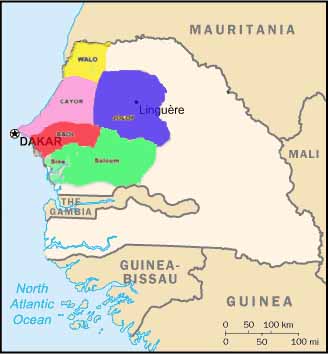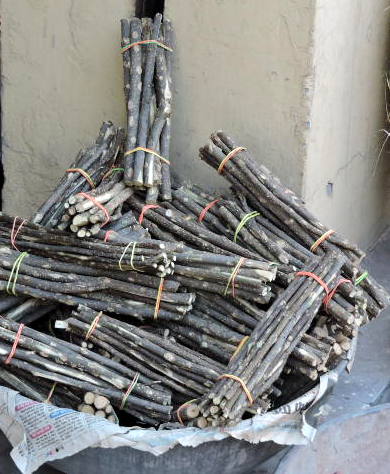|
Cassia Sieberiana
''Cassia sieberiana'', the drumstick tree, is a tree in the family Fabaceae native to Africa. It ranges from 10–20 metres in height and has very bright yellow flowers. It is used for multiple medical purposes in Africa and is found in the secondary jungle of a forest. Description Individuals of this species are anywhere from 10-20m in height. The bark ranges from a dark grey to black. The lenticels are horizontal and a reddish color. The leaves are arranged in leaflets that contain 7-10 pair of opposite leaves. The upper side of the leaf is moderately shiny while the bottom has very fine nerves with stipules that are deciduous. This plant has both flowers and fruit. The flowers are a very bright yellow during the dry season, which is from February through March. Flowers are arranged either upright or in pendulous racemes ranging from 30–50 cm. There are five sepals with 5 bracts. The petals are 15–20 cm long while the green sepals are 6-7mm in length. There are ... [...More Info...] [...Related Items...] OR: [Wikipedia] [Google] [Baidu] |
Fabaceae
The Fabaceae or Leguminosae,International Code of Nomenclature for algae, fungi, and plants. Article 18.5 states: "The following names, of long usage, are treated as validly published: ....Leguminosae (nom. alt.: Fabaceae; type: Faba Mill. Vicia L.; ... When the Papilionaceae are regarded as a family distinct from the remainder of the Leguminosae, the name Papilionaceae is conserved against Leguminosae." English pronunciations are as follows: , and . commonly known as the legume, pea, or bean family, are a large and agriculturally important of |
Cassia Sieberiana Autour Du Parc Natioal Pendjari
Cassia typically refers to cassia bark, the spice made from the bark of East Asian evergreen trees. Cassia may also refer to: Plants ;Cinnamon trees * ''Cinnamomum cassia'' (, ''ròuguì''), the cassia or Chinese cinnamon, found in southern China and Indochina * Other East Asian species of ''Cinnamomum'', such as ''Cinnamomum burmannii'' (Indonesian cinnamon) and ''C. loureiroi'', Saigon cinnamon ;Osmanthus * ''Osmanthus fragrans'' (, ''guìhuā''), is the osmanthus or sweet olive found in southern China and Indochina ;Beans * ''Cassia'' (genus), a genus of trees and shrubs in the bean family Fabaceae. * ''Senna'' (plant), a genus of the bean family Fabaceae including species formerly treated in the genus ''Cassia'', and used in herbal medicine: ** ''Senna obtusifolia'', the Chinese senna or sicklepod ** ''Senna artemisioides'', silver cassia or feathery cassia * ''Vachellia farnesiana'', another member of Fabaceae Food * Cassia gum, a food additive made from the seeds of ''S ... [...More Info...] [...Related Items...] OR: [Wikipedia] [Google] [Baidu] |
Wolof Language
Wolof (; Wolofal: ) is a language of Senegal, Mauritania, and the Gambia, and the native language of the Wolof people. Like the neighbouring languages Serer and Fula, it belongs to the Senegambian branch of the Niger–Congo language family. Unlike most other languages of the Niger-Congo family, Wolof is not a tonal language. Wolof is the most widely spoken language in Senegal, spoken natively by the Wolof people (40% of the population) but also by most other Senegalese as a second language. Wolof dialects vary geographically and between rural and urban areas. The principal dialect of Dakar, for instance, is an urban mixture of Wolof, French, and Arabic. ''Wolof'' is the standard spelling and may also refer to the Wolof ethnicity or culture. Variants include the older French , , , Gambian Wolof, etc., which now typically refers either to the Jolof Empire or to jollof rice, a common West African rice dish. Now-archaic forms include ''Volof'' and ''Olof''. English is believed ... [...More Info...] [...Related Items...] OR: [Wikipedia] [Google] [Baidu] |
Bambara Language
Bambara (Arabic script: ), also known as Bamana (N'Ko script: ) or Bamanankan (), is a lingua franca and national language of Mali spoken by perhaps 15 million people, natively by 5 million Bambara people and about 10 million second-language users. It is estimated that about 80 percent of the population of Mali speak Bambara as a first or second language. It has a subject–object–verb clause structure and two lexical tones. Classification Bambara is a variety of a group of closely related languages called Manding, whose native speakers trace their cultural history to the medieval Mali Empire. Varieties of Manding are generally considered (among native speakers) to be mutually intelligible – dependent on exposure or familiarity with dialects between speakers – and spoken by 30 to 40 million people in the countries Burkina Faso, Senegal, Guinea-Bissau, Guinea, Liberia, Ivory Coast and the Gambia. Manding is part of the larger Mandé family of languages. Geographical dis ... [...More Info...] [...Related Items...] OR: [Wikipedia] [Google] [Baidu] |
Cassia Sieberiana MHNT
Cassia typically refers to cassia bark, the spice made from the bark of East Asian evergreen trees. Cassia may also refer to: Plants ;Cinnamon trees * ''Cinnamomum cassia'' (, ''ròuguì''), the cassia or Chinese cinnamon, found in southern China and Indochina * Other East Asian species of ''Cinnamomum'', such as ''Cinnamomum burmannii'' (Indonesian cinnamon) and ''C. loureiroi'', Saigon cinnamon ;Osmanthus * ''Osmanthus fragrans'' (, ''guìhuā''), is the osmanthus or sweet olive found in southern China and Indochina ;Beans * ''Cassia'' (genus), a genus of trees and shrubs in the bean family Fabaceae. * ''Senna'' (plant), a genus of the bean family Fabaceae including species formerly treated in the genus ''Cassia'', and used in herbal medicine: ** ''Senna obtusifolia'', the Chinese senna or sicklepod ** ''Senna artemisioides'', silver cassia or feathery cassia * ''Vachellia farnesiana'', another member of Fabaceae Food * Cassia gum, a food additive made from the seeds of ''S ... [...More Info...] [...Related Items...] OR: [Wikipedia] [Google] [Baidu] |
Teeth Cleaning Twig
A teeth-cleaning twig (in India: ''datun'') is an oral hygiene tool made from a twig from a tree. It can help to prevent tooth decay Tooth decay, also known as cavities or caries, is the breakdown of teeth due to acids produced by bacteria. The cavities may be a number of different colors from yellow to black. Symptoms may include pain and difficulty with eating. Complicatio ... and gum disease. History Chew sticks are twigs or roots of certain plants that are chewed until one end is frayed. This end can be used to brush against the teeth, while the other end can be used as a toothpick. The earliest chew sticks have been dated to Babylonia in 3500 BCE and an Egyptian tomb from 3000 BCE; they are mentioned in Chinese records dating from 1600 BCE In the Ayurvedas around 4th century BCE and in Tipitaka, in the Pali Canon, Buddhist Canon around the 5th century BCE in India. The Indian way of using tooth wood for brushing is presented by the Chinese Monk Yijing (monk), Yijing ... [...More Info...] [...Related Items...] OR: [Wikipedia] [Google] [Baidu] |




